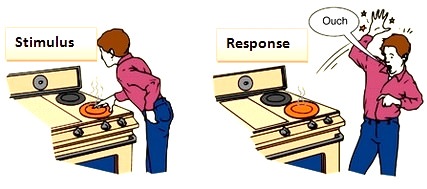All the living organisms need some means to control and coordinate their activities, so that the different organs of their bodies work together as a whole. In most organisms this objective is achieved with the help of nervous system and endocrine system. The nervous system consists of a group of organs which control and coordinate the activities of the various parts of the body in response to changes in environment.

In this chapter we will discuss in detail the mechanism of control and coordination in plants and animals. But before that, we will discuss the meanings of words stimulus and response which will help us in understanding this chapter. Stimulus is the change in environment which causes a change in activity or behaviour of an organism. Different organisms respond differently to different types of stimuli (sing. stimulus) such as heat, light, cold, pressure, smell, touch, water and force of gravity. Every organism reacts to a stimulus in the form of some movements in the body. This is called response. For example, the plants respond to sunlight by bending towards it. Here sunlight is the stimulus and the plants react by bending themselves towards the source of sunlight.
Test Your Understanding and Answer These Questions:
- Define stimulus and response.
